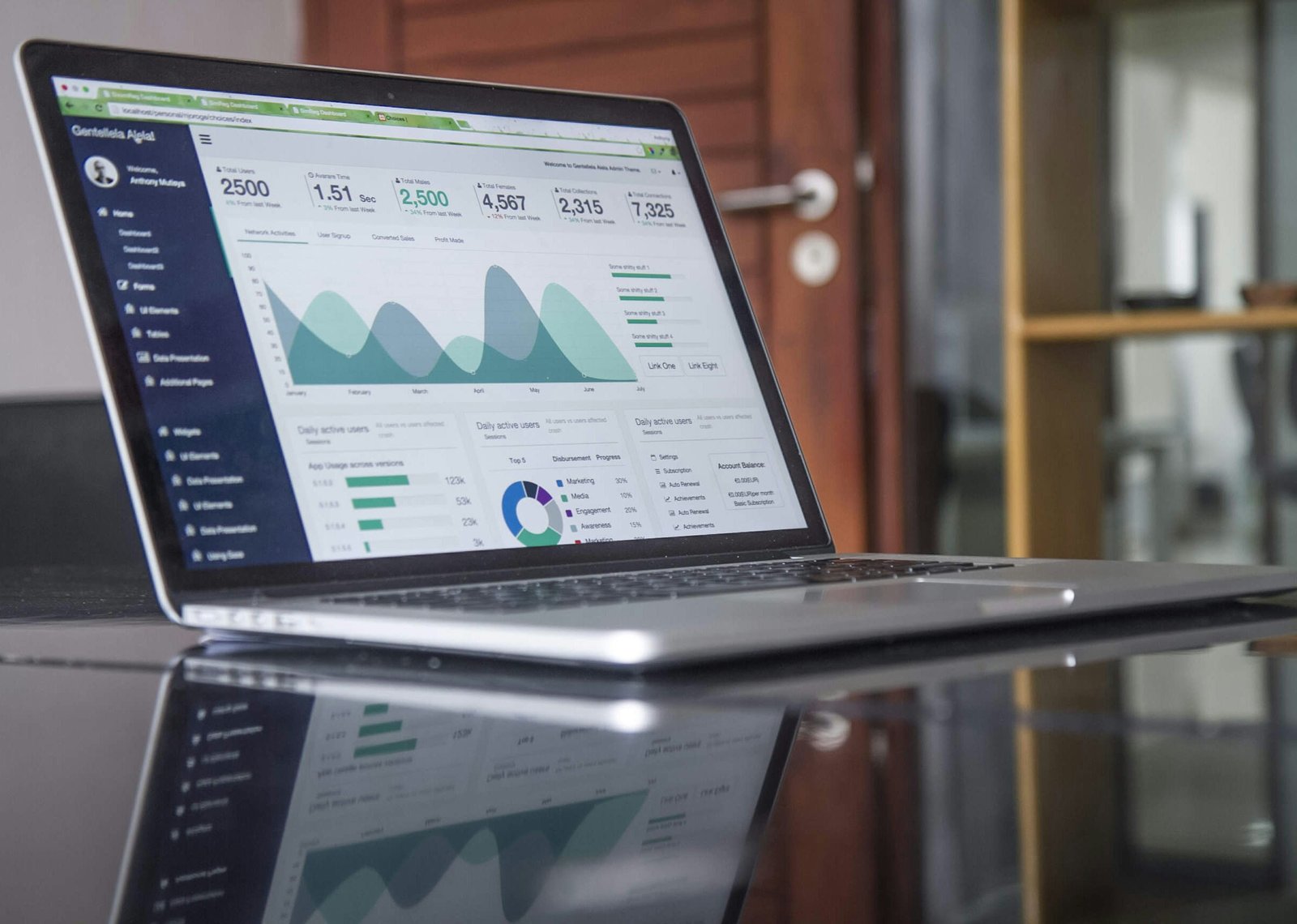Understanding Market Research
Market research is an essential tool that allows you to gather insights about your industry and target audience. Understanding its importance and the various methods available can be pivotal to the successful distribution of goods and services.
Importance of Market Research
Market research serves as a compass that guides you in making informed, data-driven decisions. It offers valuable insights into market trends, consumer preferences, and competitive landscapes (Brandwatch). By conducting thorough market research, you can:
- Identify unmet needs within your target market
- Assess product demands effectively
- Enhance your value propositions
- Create resonating marketing campaigns
- Make informed decisions that lead to successful product launches and improved customer relationships
This intelligence not only strengthens your positioning within the business landscape but also ensures that your marketing efforts align with consumer expectations.
Market Research Methods
There are several methods for conducting market research, each providing unique insights. Here are some common approaches:
| Method | Description |
|---|---|
| Surveys | Collect quantitative data from a sample group to understand preferences and behaviors. |
| Focus Groups | Gather qualitative insights through discussions with small, diverse groups of potential customers. |
| Observational | Analyze customer behavior in real-world situations to understand interactions with products or services. |
| Competitive Analysis | Examine competitors’ strategies, strengths, and weaknesses to inform your approach. |
| Online Analytics | Utilize tools and data from online platforms to track consumer engagement and website performance. |
Each of these methods contributes to a comprehensive view of the market landscape. You can choose the methods that best apply to your business context to gather the most relevant insights for refining your strategies effectively. For further reading on the topic, explore market research for goods and services.
Leveraging Sales Data
In today’s competitive marketplace, understanding and effectively using sales data is essential for enhancing customer insights and improving strategic decisions. By analyzing sales data, you can gain valuable information that informs your marketing and distribution strategies, ultimately leading to more successful outcomes for your business.
Enhancing Customer Insights
Sales data provides a wealth of information about your customers’ preferences, buying habits, and purchasing patterns over time. By combining this data with other forms of market research, you can better understand customer behavior and identify trends that may influence their buying decisions (Brandwatch).
The significance of understanding your customers is highlighted by research indicating that 66 percent of customers expect businesses to comprehend their needs (HBS Online). Understanding these customer needs allows you to tailor your offerings effectively, increasing the likelihood of repeat purchases. In fact, 91 percent of customers who have a positive experience are likely to return for future purchases (HBS Online).
| Insight Type | Importance | Customer Expectation |
|---|---|---|
| Understanding Needs | Tailors offerings | 66% expect comprehension |
| Positive Experience | Increases loyalty | 91% likely to repurchase |
Improving Strategic Decisions
The analysis of sales data should also influence your strategic decisions concerning the distribution of goods and services. By understanding your sales performance through trends, patterns, and customer feedback, you can create more effective marketing and sales strategies that align with your overall mission and goals.
When selecting appropriate distribution channels, it is crucial to consider factors like whether to utilize direct or indirect channels. Direct distribution allows you to interact directly with your end customer, while indirect distribution uses intermediaries such as wholesalers or retailers (Investopedia).
Your decisions around distribution channels can impact customer satisfaction and loyalty, making it essential to align these choices with your strategic vision. E-commerce platforms can also streamline the distribution process, making it easier for you to sell directly to consumers and manage customer expectations effectively (Investopedia).
| Decision Factor | Direct Channels | Indirect Channels |
|---|---|---|
| Customer Interaction | Direct | Intermediaries |
| Sales Strategy Alignment | Essential | Necessary for reach |
| E-commerce Efficiency | Streamlined | Requires management |
By leveraging sales data effectively, you can enhance your understanding of customer preferences and behaviors, allowing you to make informed strategic decisions that enhance your overall market position. Incorporating this data into your strategies for promoting goods and services can lead to improved outcomes and increased customer loyalty.
Globalization in Business
Globalization has transformed the landscape of business, providing new opportunities for the distribution of goods and services. Embracing globalization allows you to tap into various markets, enhancing growth potential and operational efficiency.
Advantages of Globalization
The benefits of globalization are significant. By expanding into global markets, you can lower operating costs, diversify resources, and reach a broader audience. Here are some key advantages:
| Advantage | Description |
|---|---|
| Lower Operating Costs | Globalization enables businesses to source materials and labor from different countries, reducing costs. |
| Increased Market Reach | It broadens your customer base, allowing access to new markets and increased sales opportunities. |
| Economies of Scale | Businesses can produce goods at a larger scale, leading to cost efficiencies and competitive pricing. |
| Enhanced Innovation | Exposure to diverse markets fosters innovation and adaptation to different consumer needs. |
| Risk Diversification | Spreading operations across various markets mitigates risks associated with economic downturns. |
According to Investopedia, globalization promotes increased economic integration and specialization, which enhances trade opportunities in financial services and capital flows.
Strategies for Global Markets
To effectively leverage globalization, implementing strategic approaches is crucial. Here are some strategies you can consider:
| Strategy | Description |
|---|---|
| Market Research | Conduct thorough market analysis to understand local consumer behavior, preferences, and competition. This informs your marketing strategy for goods and services. |
| Adaptation of Products | Tailor your products or services to fit local needs and cultural preferences, enhancing customer satisfaction. You can use insights from consumer behavior towards goods and services for guidance. |
| Strategic Partnerships | Form alliances with local businesses or distributors to gain insights into the market and boost distribution. |
| Compliance and Regulations | Understand and comply with local regulations, trade policies, and tariffs to ensure seamless operations. |
| Performance Metrics | Establish key performance indicators (KPIs) to measure the effectiveness of your strategy in different markets. |
By adopting these strategies, you can position your business for success in the global marketplace. Consider utilizing market research for goods and services to stay informed about trends and consumer preferences in various regions, enhancing your potential for success as you navigate the global distribution of goods and services.
Digital Technology in Distribution
In the ever-changing landscape of business, understanding the role of digital technology in the distribution of goods and services is paramount. With advancements in technology, businesses can better manage their distribution channels and reach their target customers more effectively.
Direct vs. Indirect Channels
Direct distribution channels enable you to connect with your end customers without intermediaries. This method allows for more control over the sales process and direct feedback from your consumers. On the contrary, indirect distribution channels involve intermediaries such as wholesalers or retailers. These channels may offer broader market reach but can dilute your control over product presentation and customer interaction (Investopedia).
Key Differences
| Feature | Direct Channels | Indirect Channels |
|---|---|---|
| Customer Interaction | Direct contact with customers | Interaction through intermediaries |
| Control Over Sales Process | High control over pricing and presentation | Limited control over intermediaries |
| Feedback Mechanism | Immediate feedback from customers | Feedback can be delayed |
| Cost Implications | Lower overhead costs | Higher costs due to intermediaries |
Utilizing digital technology, you can develop an efficient direct distribution system through e-commerce tools and AI sales technologies, leading to improved efficiency and success (Investopedia).
E-Commerce Advancements
E-commerce has revolutionized how goods and services are distributed. It creates opportunities to reach a wider audience quickly and cost-effectively. Through online platforms, businesses can streamline the distribution process and sell directly to consumers, eliminating some of the complexities associated with traditional methods (Investopedia).
This digital shift allows for:
- Increased Reach: Access to global markets with minimal investment.
- Real-Time Analytics: Gathering immediate data on customer preferences and sales trends.
- Enhanced Customer Experience: Personalization options that can improve customer satisfaction.
E-commerce also enables various marketing strategies, from promoting goods and services to using online channels for cross-selling goods and services. Implementing a robust e-commerce strategy helps to stay competitive in today’s market and meet customer expectations effectively.
As you navigate the distribution of goods and services, identifying the best channels and technology suited for your business can have a significant influence on your overall success. Ensure to explore existing e-commerce solutions that align with your distribution needs.
Customer Needs Assessment
Understanding customer needs is vital for effective distribution of goods and services. You can enhance your marketing strategies by employing effective assessment methods and utilizing the design thinking approach.
Effective Assessment Methods
To accurately gauge customer needs, various assessment methods can be employed. One effective technique is conducting interviews. This method allows you to understand customer needs more thoroughly by gathering detailed insights. When conducting these interviews, it is crucial to maintain a structured format and avoid leading questions, which can skew the results (HBS Online).
Another useful framework is the “Look, Ask, Try” approach. This method encourages you to observe customers in their natural environments, ask them questions about their preferences, and invite them to try potential solutions. This comprehensive engagement can help identify latent customer needs that may not be immediately apparent.
Here’s a summary of effective assessment methods:
| Method | Description |
|---|---|
| Interviews | Structured conversations to gather in-depth insights without leading questions. |
| Look, Ask, Try | A framework for observing, questioning, and testing solutions with customers. |
Design Thinking Approach
Design thinking is one of the most powerful tools for identifying and addressing customer needs. This human-centric, solutions-based mindset emphasizes understanding the end-user and innovating based on customer insights. By utilizing design thinking, you can create strategies that resonate with your target audience and address their specific challenges and desires (HBS Online).
Incorporating design thinking into your assessment process allows you to develop innovative solutions tailored to customer expectations. This iterative process typically involves five stages:
- Empathize: Understand the user’s needs through observation and engagement.
- Define: Clearly articulate the problem based on insights gathered.
- Ideate: Brainstorm a range of potential solutions.
- Prototype: Create simple versions of your solution to visualize and test ideas.
- Test: Engage with users to gather feedback and refine your solution.
Using these methodologies ensures that your business strategies align closely with customer needs, enhancing the effectiveness of your distribution efforts. For further insights on understanding your market and refining your products, check out our article on market research for goods and services.
Distribution Channels
Understanding the various channels for distributing goods and services is vital for ensuring that products reach the intended customers efficiently. These channels play a crucial role in your overall marketing strategy.
Definition and Importance
A distribution channel is a chain of businesses or intermediaries through which a good or service passes until it reaches the intended consumer. Whether your business utilizes short or long distribution channels depends on the number of intermediaries required to deliver your product or service (Investopedia).
Selecting the appropriate distribution channel is essential as it directly affects how your product reaches customers, impacts customer satisfaction, and influences sales performance. A well-structured channel can enhance your marketing efforts and operational efficiency.
Factors to consider when determining the best distribution strategy for your business include:
- Adding value for consumers
- Understanding customer preferences for direct or indirect channels
- Evaluating the effectiveness of multiple channels in reaching different segments
Types of Distribution Channels
Distribution channels can be categorized into two main types: direct and indirect.
| Type of Channel | Description |
|---|---|
| Direct Distribution | This allows the manufacturer or service provider to deal directly with the end customer. This approach can enhance customer engagement and streamline the purchasing process, facilitating better sales and customer relationship management, especially with the aid of e-commerce tools and digital technology. |
| Indirect Distribution | In this method, goods are sold through intermediaries such as wholesalers or retailers. With more levels and intermediaries involved, this channel can provide broader market access but may reduce the manufacturer’s direct control over sales. |
In today’s digital landscape, e-commerce platforms have streamlined the distribution process, enabling producers to sell directly to consumers (Investopedia). Utilizing digital technology in your distribution strategy often equals greater success due to enhanced efficiency in sales and customer relationship management.
Choosing the right distribution channel not only aligns with your overall mission and strategic vision but also helps achieve your sales goals while optimizing your marketing strategy for goods and services. Understanding these channels is essential for effective promoting goods and services and maintaining competitiveness in the market.
Tech Transformation in Logistics
In the evolving landscape of logistics, technology plays a pivotal role in optimizing the distribution of goods and services. Two major advancements significantly impacting this field are GPS technology in fleet management and the use of drones for last-mile delivery.
GPS Technology in Fleet Management
GPS technology has revolutionized fleet management by facilitating real-time vehicle tracking and route optimization. This capability allows you to monitor your fleet’s location and ensure timely deliveries, thereby enhancing efficiency and customer satisfaction. The integration of telematics systems with GPS technology further enhances your operational capabilities, providing valuable insights into vehicle health and driver performance (Savvycom Software).
Benefits of using GPS technology in fleet management include:
| Benefit | Description |
|---|---|
| Real-Time Tracking | Monitor the real-time location of vehicles. |
| Route Optimization | Analyze traffic conditions and adjust routes for efficiency. |
| Driver Behavior Analysis | Gain insights into driving patterns that could improve safety and reduce fuel consumption. |
| Maintenance Alerts | Receive notifications about vehicle maintenance needs to prevent breakdowns. |
Drones in Last-Mile Delivery
Drones are making a significant impact in logistics, particularly in last-mile delivery. They offer faster delivery times and the ability to reach remote or hard-to-access areas. Currently, drones are used for delivering essential items, such as medical supplies, to locations that traditional delivery methods may struggle to reach (Savvycom Software).
Key advantages of employing drones for last-mile delivery include:
| Advantage | Description |
|---|---|
| Speed | Drones can significantly reduce delivery times compared to traditional methods. |
| Cost-Effectiveness | Lower operational costs in the long run due to reduced reliance on ground transport. |
| Accessibility | Ability to deliver to locations that are challenging or unsafe for ground vehicles. |
| Reduced Carbon Footprint | Drones offer a more environmentally friendly delivery option. |
Incorporating these technologies can enhance efficiency and responsiveness in your business, providing a competitive edge in the distribution of goods and services. For more insights into optimizing your distribution strategies, consider exploring our guides on marketing strategy for goods and services and e-commerce for goods and services.
Challenges in Distribution
Navigating the distribution of goods and services comes with significant challenges, particularly in today’s fast-paced and competitive market. Here, we will discuss two major issues: rising transport costs and supply chain disruptions.
Rising Transport Costs
Transport costs have been climbing steadily, exerting pressure on logistics providers and impacting their profitability. Increasing fuel prices, coupled with rising energy costs, affect the overall bottom line of third-party logistics (3PL) companies, making it challenging for them to negotiate client contracts and stay competitive within the market. To combat this, companies are exploring various strategies to maintain efficiency and profitability.
| Cost Factors | Impact on Business |
|---|---|
| Fuel Prices | Increased operational costs |
| Energy Costs | Higher billing for logistics services |
| Route Planning Inefficiencies | Wasted time and resources |
Optimizing route planning can significantly minimize transportation costs. By leveraging technology, logistics companies can improve route efficiency and reduce fuel consumption. Additionally, negotiating long-term contracts with clients can provide stability in fluctuating cost environments, while adopting flexible pricing strategies can help adjust to rising transport costs without alienating clients.
Supply Chain Disruptions
Supply chain disruptions pose another critical challenge in the distribution of goods and services. These disruptions can be triggered by natural disasters, geopolitical events, global crises, and unexpected market shifts. Such disruptions can lead to delayed deliveries, increased costs, and diminished customer satisfaction, which can impact your reputation and bottom line.
| Disruption Causes | Potential Effects |
|---|---|
| Natural Disasters | Delays in shipping and infrastructure damage |
| Geopolitical Events | Trade restrictions and increased tariffs |
| Global Crises (e.g., COVID-19) | Sudden changes in demand and supply shortages |
Developing resilient and flexible supply chain strategies is essential to mitigate these risks. Companies should consider diversifying suppliers to reduce dependencies on single sources, investing in technology for real-time visibility to track progress and challenges, and establishing contingency plans that enable rapid responses to unforeseen events (ArcherPoint).
By recognizing these challenges and implementing effective strategies, your business can enhance the resilience of your distribution channels and better navigate the complexities associated with the distribution of goods and services.




















